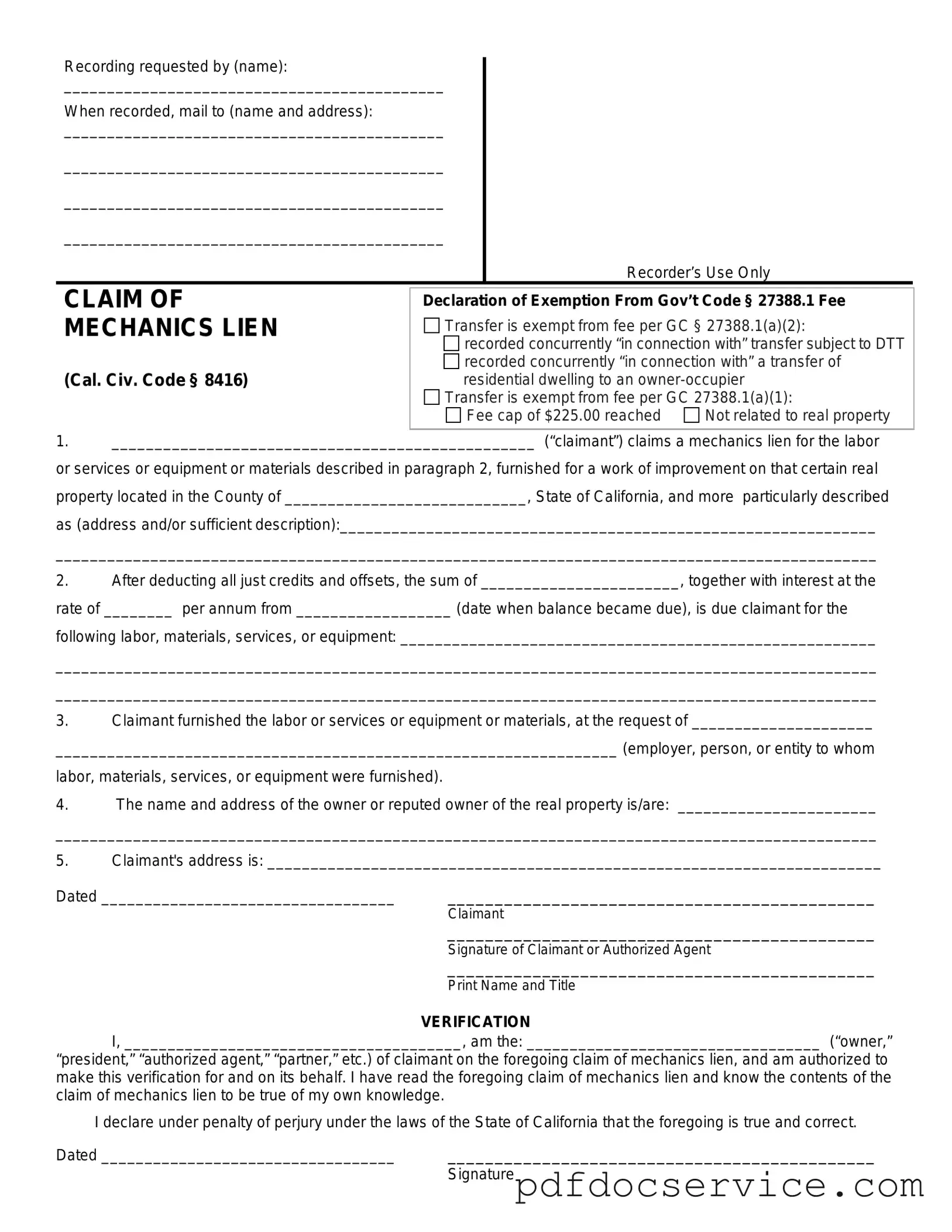What is a Mechanics Lien in California?
A Mechanics Lien is a legal claim against a property that is filed by contractors, subcontractors, or suppliers who have not been paid for work performed or materials supplied for a construction project. It ensures that those who contribute to the improvement of a property have a way to secure payment.
Who can file a Mechanics Lien?
In California, various parties can file a Mechanics Lien, including:
-
General contractors
-
Subcontractors
-
Suppliers of materials
-
Laborers who have worked on the project
However, some requirements must be met, such as having a direct contract with the property owner or being involved in the project in a significant way.
What is the process for filing a Mechanics Lien?
The process generally involves the following steps:
-
Gather necessary information, including the property address, details of the work performed, and the amount owed.
-
Complete the Mechanics Lien form, ensuring all information is accurate and complete.
-
File the completed form with the county recorder’s office where the property is located.
-
Serve a copy of the lien to the property owner and other relevant parties.
Each step must be carefully followed to ensure the lien is valid and enforceable.
What is the deadline for filing a Mechanics Lien?
In California, the deadline to file a Mechanics Lien is generally 90 days from the date of the last work performed or materials supplied. However, if a notice of completion is recorded, the deadline shortens to 60 days. It is crucial to be aware of these timelines to protect your rights.
The Mechanics Lien form must include the following information:
-
Name and address of the claimant (the person filing the lien)
-
Name and address of the property owner
-
Description of the work performed or materials supplied
-
The amount owed
-
The property’s legal description
Providing complete and accurate information is essential for the lien to be enforceable.
Can a Mechanics Lien be removed?
Yes, a Mechanics Lien can be removed in several ways. The property owner may pay the amount owed, which would lead to the lien being released. Alternatively, a court may order the lien to be removed if it is found to be invalid. Additionally, a lien can be removed by filing a formal notice to withdraw the lien.
What happens if a Mechanics Lien is not paid?
If the debt remains unpaid, the claimant may take legal action to enforce the lien. This often involves filing a lawsuit to foreclose on the property, which can lead to a sale of the property to satisfy the debt. It is advisable to seek legal counsel if this situation arises.
Is there a cost associated with filing a Mechanics Lien?
Yes, there are costs associated with filing a Mechanics Lien. These may include filing fees charged by the county recorder's office and potential legal fees if assistance is required. It is wise to budget for these expenses when considering filing a lien.
Can a Mechanics Lien be filed against a residential property?
A Mechanics Lien can be filed against both residential and commercial properties in California. However, specific rules and regulations may apply depending on the type of property and the nature of the work performed. It is important to understand these nuances before proceeding.
What are the consequences of filing a false Mechanics Lien?
Filing a false Mechanics Lien can have serious consequences, including potential legal action for slander of title. If a lien is found to be fraudulent, the filer may be held liable for damages. It is crucial to ensure that all claims made in the lien are truthful and supported by evidence.
